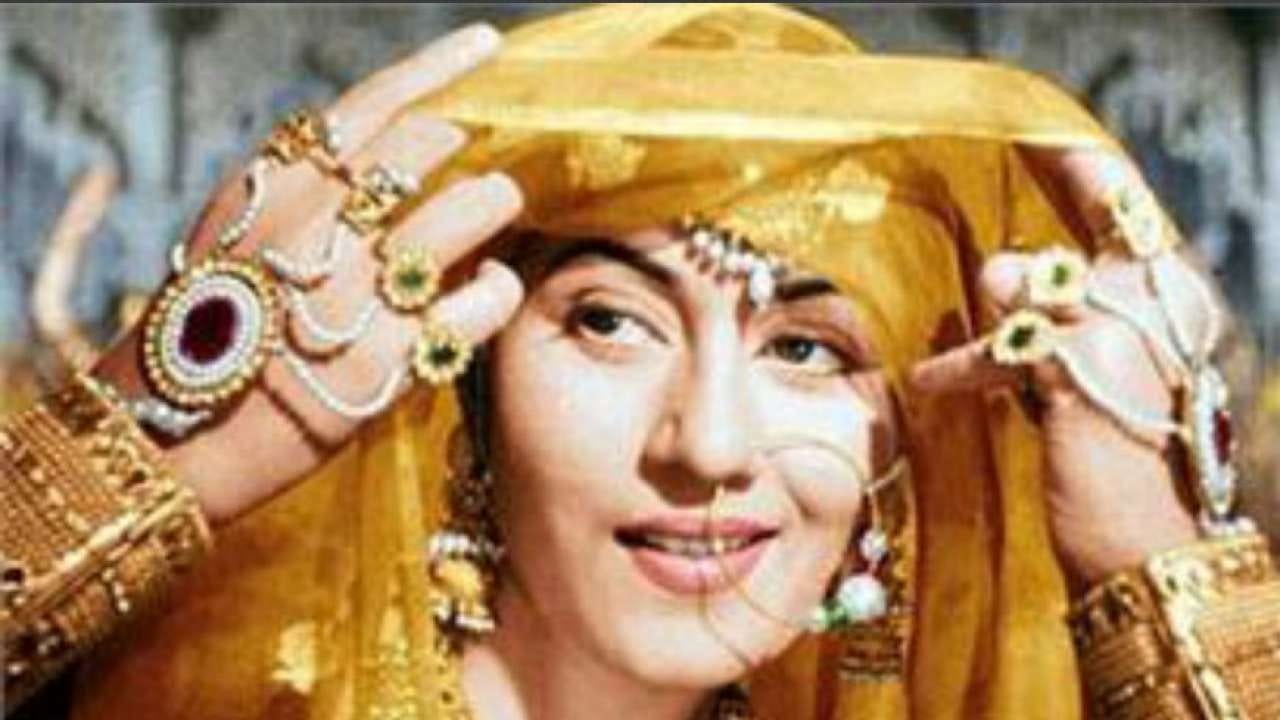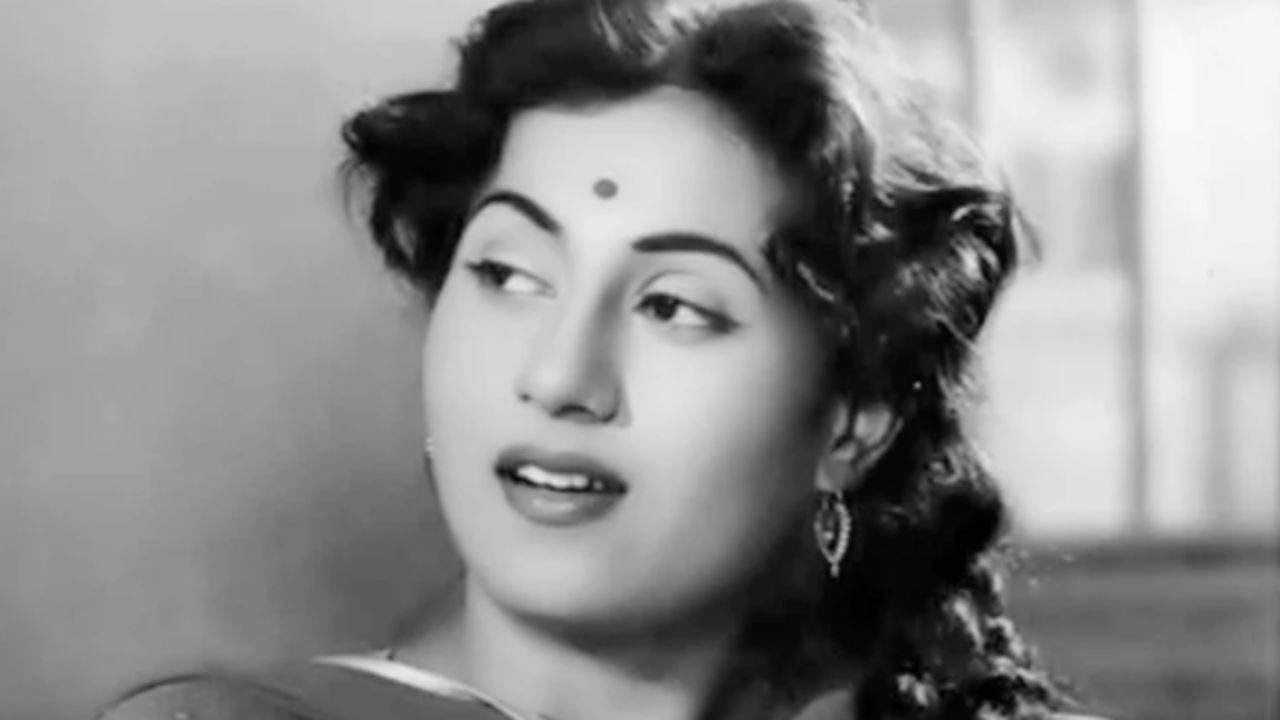Madhubala, the Venus Beauty With a Tragic Life
Known as the “beauty with tragedy” Madhubala’s real life was just like her stupendous blockbusters in reel-life- success, fame, immense hardship, love, and relentless heartbreaks.
The Ethereal Beauty
In 1949, Bollywood’s first horror film, "Mahal," was released. The movie turned out to be a huge blockbuster, but more than the plot, the audience was mesmerized by the ethereal beauty who went on to haunt the psyche of generations of Indians for more than 70 years. She was Madhubala- famously dubbed as the Marilyn Monroe of Bollywood.
And strangely, both Madhubala and Marilyn Monroe had parallel lives-the same smoldering looks, the dizzy heights of superstardom, bitter heartbreaks, and a tragic end. As Khatija Akbar writes in her “I Want to Live: The Story of Madhubala,"
“There was a remarkable similarity in the soft vulnerability of their faces. The same abandoned to their laughter, head thrown back, that same incandescent glow.”
The biggest tragedies of Madhubala's life were her star-crossed love affairs. The iridescent beauty who ruled millions of hearts worldwide had her heart broken several times irreparably. Her failed love stories almost overpowered her illustrious professional career, leaving her immersed in a relentless flow of tragedy that continued till the end of her life.
Finally, after weeks of illness, she suffered a heart attack on the night of February 22, 1969, and died the next morning. She was just nine days short of her 36th birthday.
The Making of Madhubala
Mumtaz Jehan Begum Dehlavi was born on February 14, 1933. When Mumtaz was six, her father, Attaullah Khan, lost her job at the Imperial Tobacco Company in Peshawar, Pakistan, and moved to Mumbai for work. Life in Mumbai was initially hard, with the family struggling to make ends meet.
Young Mumtaz was enamored by the movie glitz of Mumbai and dreamed of becoming an actress in the glamourous industry of big money and fame. Her first break as a child actor came at nine years with the film “Basant (1942)”. The film became an all-time grosser and established her foothold in the industry. “Basant” was soon followed by “Neel Kamal," where she got to act with the iconic Raj Kapoor.
It was during the shooting of “Neel Kamal” that actress Devika Rani impressed by her mesmerizing beauty and powerful performance, rechristened her name from Mumtaz to "Madhubala," meaning “honey belle." Little did she know that the word "Madhubala" would soon become the heartthrob of millions in the Indian subcontinent. A star was born.
In 22 years, she appeared in around 73 Hindi films, produced two, and sang 20 songs in her early films. Madhubala received widespread acclaim for her stellar performances in movies like “Mahal (1949)”, “Amar (1954)”, “Mr. & Mrs. 55 (1955)”, “Chalti Ka Naam Gaadi (1958)”, “Mughal-e-Azam (1960)” and “Barsaat Ki Raat (1960)”.
In 1960, she received her only nomination for the best actress award for her iconic performance in “Mughal-e-Azam (1960)”.” “Mughal-e-Azam” established her among Bollywood greats as she carved a niche for herself among iconic actresses like Meena Kumari, Nutan, Waheeda Rehman, Suraiya, Vyjanthimala, and Nargis.
However, Madhubala's stupendous success had a dark line of tragedy underneath the glitz. It was during the shooting of the movie “Bahut Din Huwe (1954)” it was discovered that she was suffering from a congenital "ventricular septal defect." In short, she had a hole in her heart since birth. At that time, there was no cure or treatment, and her condition was fragile.
Madhubala, however, just ignored her condition. Instead of resting, she pursued her stardom with even greater enthusiasm as the clock continued ticking to her doom.
Love Affair With Dilip Kumar
It is said that Madhubala had a unique way of propositioning men who caught her fancy. She would give them a red rose and a handwritten note that read, "Accept it if you love me." Of course, with her beautiful looks and charismatic persona, not many men could say no to her. As journalist Mohan Deep writes in his book “The Mystery and Mystique of Madhubala,”
“She was a woman possessed. Haunted by her own insecurities until the very end. She loved men. And lost them. Latif, Mohan Sinha, Kamal Amrohi, Premnath, Zulfiqar Ali Bhutto, Dilip Kumar, Pradeep Kumar, Bharat Bhushan, Kishore Kumar.”
Unfortunately, her every love affair ended bitterly, and the last nail in her coffin was with the legendary Dilip Kumar. They met on the film “Tarana" sets and fell head-over-heels in love. Dilip Kumar seemed perfect for Madhubala, and it said that she would start blushing even at the mention of his name. By the mid-1950s, the Dilip Kumar-Madhubala duo had become the new Romeo-Juliet of Bollywood, and their wedding was very much in the cards.
But Madhubala's father, Attaullah Khan, was against the match and went all guns blazing to stop the marriage. The showdown happened on "Naya Daur (1957) sets," which Madhubala was shooting with Dilip Kumar. Attaullah Khan stormed the sets and stopped his daughter from acting with Dilip Kumar. Eventually, Madhubala quit the film, and the director took her to court.
The tabloids had a field day as the case came to court. It was then Madhubala got an unpleasant surprise. Her would-be husband, Dilip Kumar, testified against her for the director. The damage was done. Yet another love affair of Madhubala bites the dust.
Marriage and Death
In 1958, Madhubala married her childhood friend Kishore Kumar in a private ceremony. The marriage was kept hush-hush because most of her fans disapproved of the wedding. However, it was only short-lived happiness as soon her condition started deteriorating with time, and she became bedridden.
She started spewing out blood from her mouth and nose at an alarming rate, and soon her once beautiful body withered down into a pitiful mass of skin and bones. She finally died of a heart attack on February 22, 1969. Among other visitors and fans, Dilip Kumar also came to give Madhubala one final tear-jerking tribute.
In 2004, a digitally-colorized version of the original movie “Mughal-e-Azam” was released as a tribute to Madhubala. On March 18, 2008, a commemorative postage stamp featuring Madhubala was released. On August 10, 2017, Madame Tussauds immortalized Madhubala in wax. In 2018, the New York Times published a belated obituary for her.
Besotted fans still call her “a living Taj Mahal,” aptly so, as the Taj Mahal is not only an eternal symbol of love but also a tomb for two lovers, a beauty with a tragedy like Madhubala.
Some Iconic Madhubala Movies Worth Watching
· Mughal-E-Azam (1960)
· Howrah Bridge (1958)
· Barsaat Ki Raat (1960)
· Chalti Ka Naam Gaadi (1958)
· Kala Pani (1958)
· Mr. & Mrs. '55(1955)
· Tarana (1951)
· Half Ticket (1962)
· Jaali Note (1960)
· Mahal (1959)
Sources
· The triumph and tragedy of being Madhubala: How a nation’s beloved icon died of a broken heart
· The Magic of Madhubala: The Beauty and Her- Dr. Dinesh Sharma
· Great Actress Madhubala: A Very Special Book -Tariqul Islam
· Remembering Madhubala, Bollywood’s Very Own Marilyn Monroe








Aptly written! Kudos for your brilliant writing. Please how or where can I get the biography written by Mohan Deep on Madhubala? The book doesn't seem to be online. Thank you.